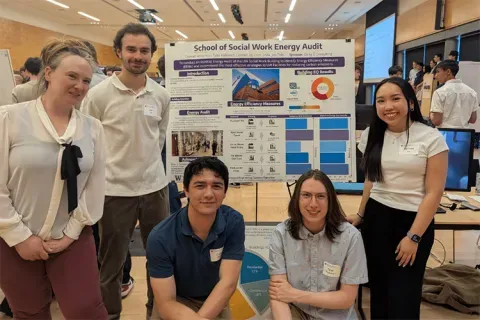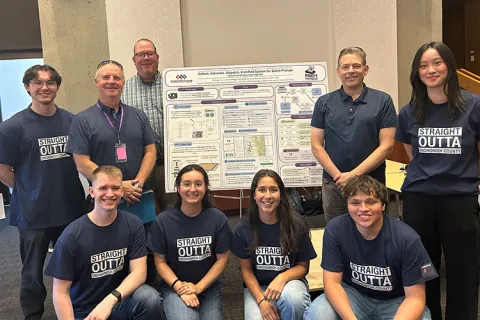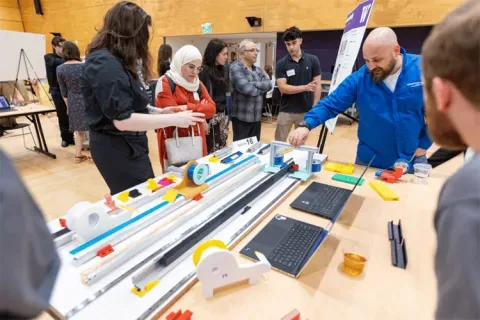Boeing
Laser Surface Smoothing Optimization
Laser processing of substrates is an evolving technology that offers advantages in processing rate, sustainability and ergonomics. As laser capabilities ramp up, the characterization of more material systems is required to expand the scope of opportunities. This student team will work to evaluate the effectiveness of lasers to remove material from a polymeric surface to yield a smooth, uniform surface, as an alternative to sanding. (Sanding is used to smooth surfaces for many end-item applications, ranging from decorative laminates, to decorative paint finishes.) To date, the laser has been used to remove a given amount of a material, but follows the contour of the underlying surface. The objective this student team will work to accomplish is to determine the effectiveness of laser processing for near surface ablation and smoothing of material in terms of rate and uniformity. The materials this student team could potentially use can be either 3D printed (FDM) materials with characteristic, repeated surface roughness from the resolution of the layer height or other relevant polymer based composite systems. First, the student team will work to analyze the untreated surface for surface topography and surface energy analysis. The student team will also work to design a laser ablation test to determine the effectiveness of the laser to remove material. Third, the student team will work to develop a rate of removal program that can be tuned to the topology of the surface. And then, the student team will work to tune the laser program to smooth the surface to a consistent profile. Following this, the student team will work to characterize the material for the effectiveness at smoothing the surface. The questions this student team will work to answer include: what are the material properties of the exposed substrate? When comparing the surface energy and adhesive properties of the material to the control specimens, what is the effect of too little power and too much power delivered? This student team could work to test on various grades of materials (such as high temperature thermoplastics like PEEK or PEKK or Onyx, common low-grade polymers like ABS or PLA or ASA, bagside composite, etc.). The student team will work to develop laser delivery settings that are appropriate for each class of materials for surface smoothing. The student team will work to record the test results of the of the methods performed. Provide a report out of the approach, techniques attempted, results and conclusions. Last, the student team will work to provide a future work statement based upon the conclusions drawn.
Faculty Adviser(s)
Luna Yue Huang, Materials Science & Engineering
Related News

Mon, 10/13/2025 | UW Mechanical Engineering
Capstone collaboration leads to award
An ME capstone team received first place for its energy audit of the UW School of Social Work building.

Thu, 07/17/2025
UW engineering students develop smart ballot solution
UW engineering students develop smart technology solution to improve ballot collection for Snohomish County.

Mon, 07/07/2025 | UW Mechanical Engineering
Capstone creations
Students displayed innovative capstone design projects at the 2025 expo.

Fri, 09/20/2024 | UW Civil & Environmental Engineering
Smarter irrigation for a greener UW
A new project combines satellite data with ground sensors to conserve water and create a more sustainable campus environment.